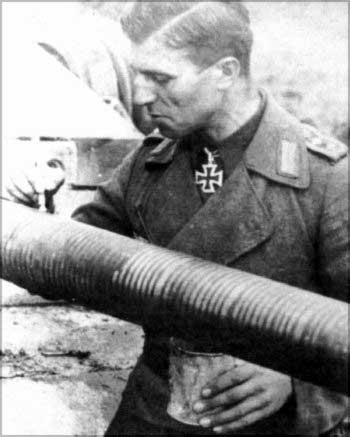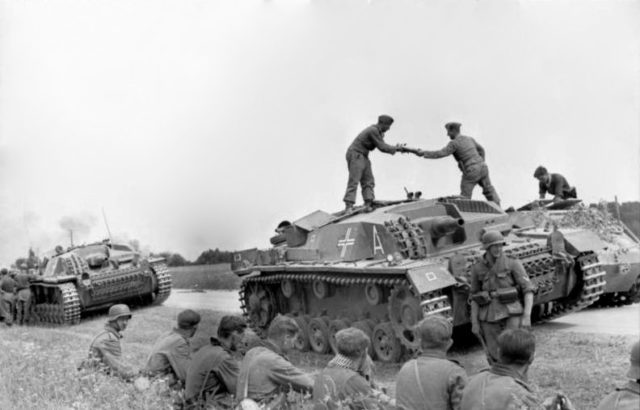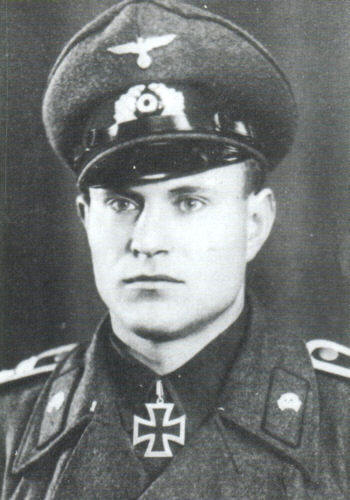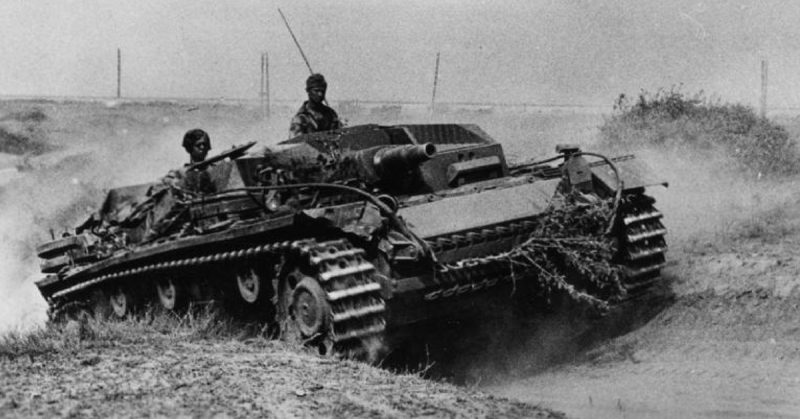War History online proudly presents this Guest Piece from Evan Pinter.
With the ongoing popularity of games (most notably World of Tanks), movies and books about tank warfare in WWII, it comes as no surprise that much attention is drawn to the feats of individual tankers. From the German side, it is chiefly commanders of the vaunted Tiger tanks that draw the most attention. Names such as Michael Wittmann, Otto Carius and Kurt Knispel have all been the source of much attention and written material.
However, notwithstanding the accomplishments of such soldiers, in some ways they help to conceal the huge mass of other tankers in the German army operating much less humble vehicles who also achieved significant feats in battle. One of these was the Sturmgeschütz (commonly abbreviated as StuG) series of AFVs. These were not technically tanks, but assault guns. Specifically specialized armoured fighting vehicles with a fixed forward facing gun on a tank chassis.
The lack of a rotating turret made them cheaper and easier to make than conventional tanks, and this led to their being the most numerous German AFVs on the battlefield in the late-war years. And over the years the StuG arm produced plenty of its own brave and decorated commanders. In this article, I will introduce three of them.
Hugo Primozic
Primozic began his career in the Sturmartillerie at the end of June 1942 as a platoon leader in the newly-formed German StuG Battalion 667. This battalion was deployed as part of the German Army Group Centre, and like other assault gun units, was used primarily for supporting infantry attacks in important sectors as well as providing invaluable anti-tank support in defense. It was in this latter role that the Battalion would excel in, and it would need this skill, as it was soon moved to the German Rzhev salient.

This bulge in the front, which was the closest German frontline to Moscow, had been attacked continuously during the course of 1942 and consequently the assault guns of StuG Battalion 667 were badly needed. And it was here that Primozic would begin to make a name for himself, destroying many Russian tanks.
On 15 September 1942 the Russians launched a heavy tank and infantry assault in the area of the battalion. Hugo Primozic and two other assault guns drove forward to engage the attacking enemy. The battle was fierce, with Primozic and his two wingmen repositioning constantly to avoid being destroyed themselves. However the Russian attack was defeated, and Primozic’s StuG alone destroyed 24 tanks on that day. He was later awarded the Knight’s Cross to the Iron Cross for this action.
The Russian attacks would not stop here. Their greatest assault yet on the Rzhev salient began on 24 November, Operation Mars. Once again the German assault gun battalions were employed to break up the Russian armoured attacks. And Primozic once again played a key part in the defense, destroying seven tanks in a single day and raising his total to 60 tanks destroyed by the end of December. On 25 January 1943 he received the Oakleaves to his Knight’s Cross in recognition of his achievements, as the first NCO in the Wehrmacht to be so decorated. And his entire crew was awarded the German Cross in Gold.
Following this he was promoted to Leutnant and, as was often the case among distinguished soldiers, was reassigned to a training unit where he spent the remainder of the war. In the course of his career he was credited with destroying 68 tanks, and all within a time span of just five months.
Josef Brandner
Josef (or “Sepp”) Brandner began his career in the Sturmartillerie fairly early. He joined the StuG Battalion 202 in 1941, his unit receiving its baptism of fire in the attack on Russia. He served with distinction in his unit until February 12th 1942, when he was shot by a sniper in the neck. However, the wound was not mortal and after a short convalescent leave in Germany he returned to his unit in summer of the same year.
He continued to command and fight in the months that followed. Through continued achievements in battle he was promoted to captain in June 1943 and on 16 September was awarded the German Cross in Gold after his 45th tank kill. Following further action with the 202nd, he was reassigned to command Sturmgeschütz Brigade 912 in 1944 and assumed command of the unit in mid-December of that year.
He had arrived just in time. StuG Brigade 912 was one of the units trapped in Courland, the westernmost region of Latvia that adjoins the Baltic sea. Hitler had refused to evacuate the remnants of Army Group North that were trapped there, and so the units there took up defensive positions. The Russians launched their third attempt to crush the Courland pocket on 21 December 1944.

In Brander’s sector, the Russian’s planned to cut a vital road that ran parallel to the German front, which would allow them to split the defending forces in two. But Brandner rallied his assault guns, and on this first day of battle his StuG’s wiped out the main Russian group in a counterattack, destroying 26 tanks in the process. Brandner was finally awarded the Knight’s Cross, for which he had been recommended twice before.
The Fourth Battle of Courland began on 25 January 1945. But once again Brandner’s Brigade played a vital role in halting the attack, destroying over 77 Russian tanks. Brandner himself personally destroyed his 57th tank. The Russians tried again to destroy stubborn defenders on 20 February, and StuG Brigade 912 again inflicted heavy casualties on the attackers. In a single two-hour action the brigade destroyed 45 Russian tanks and restored the German front line. The Sixth and last battle of Courland began on 18 March, but did no better than its predecessors. No more major attacks there were conducted until war’s end.
On 30 April Sepp Brandner was awarded the Oakleaves to his Knight’s Cross for the successful leadership of his brigade. Just over a week later the war ended and Brandner along with his men entered Russian captivity, where he remained until his release in 1948. Over the course of his career Brandner personally destroyed a total of 66 Russian tanks.
Fritz Amling
This StuG commander was also originally part of the StuG Battalion 202. He joined the battalion in November 1941 and thus partook in the ferocious battles around Rzhev which his unit found itself in.

It was in December 1942, during Operation Mars, where Amling also made his mark as a StuG ace. On December 11th two assault guns, one commanded by Amling, fought off repeated Russian assaults in the area. They were shifted from one area to another, eliminating tank thrusts wherever they came.
During the course of the battle Amling’s StuG was hit and a piece of armour that had broken off from the vehicle hit Amling directly in the face. Fortunately for Amling his skull resisted the impact, but he was bleeding badly even so. Despite this he had his wound bandaged and continued the fight. By the end of the day he and his gunner Bruno Guskowski had destroyed 24 Russian tanks, five in the space of one minute. And though still badly injured, Amling and his crew remained on the battlefield and on the following day destroyed 18 more Russian tanks. Thus a total of 42 Russian tanks had been destroyed by Amling’s StuG within just two days.
Amling was swiftly awarded the Knight’s Cross, and like Primozic was assigned to a replacement unit to train the next generation of StuG crews. He remained in this posting until war’s end.
By Evan Pinter
